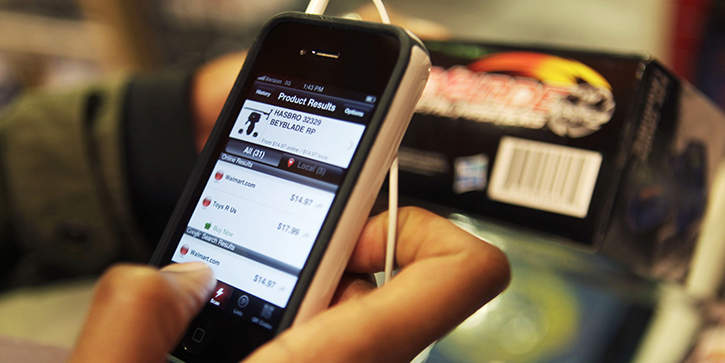On the other hand, people are still shopping, just in different ways. And the shift from brick-and-mortar stores to “online malls” has many consequences we don’t even understand yet.
For example, it’s becoming clear that online retailers aren’t shy about using our own data against us. What do you call a market in which the price you pay depends on who you are?
Shopping the Shoppers
On the surface, online shopping seems to favor shoppers. It’s easy to compare prices, shipping cost and time, sales tax, and other factors to get the best deal. Retailers have to offer lower prices to make you buy, right?
Well, maybe. Last week, I read a fascinating Atlantic Monthly article by Jerry Useem: “How Online Shopping Makes Suckers of Us All.” It’s about the sophisticated ways online merchants adjust and even personalize prices to maximize revenue. A quick excerpt:
“I don’t think anyone could have predicted how sophisticated these algorithms have become,” says Robert Dolan, a marketing professor at Harvard. “I certainly didn’t.” The price of a can of soda in a vending machine can now vary with the temperature outside. The price of the headphones Google recommends may depend on how budget-conscious your web history shows you to be, one study found. For shoppers, that means price—not the one offered to you right now, but the one offered to you 20 minutes from now, or the one offered to me, or to your neighbor—may become an increasingly unknowable thing. “Many moons ago, there used to be one price for something,” Dolan notes. Now the simplest of questions—what’s the true price of pumpkin-pie spice?—is subject to a Heisenberg level of uncertainty.
Which raises a bigger question: Could the internet, whose transparency was supposed to empower consumers, be doing the opposite?
In other words, online retailers are now comparison shopping us. E-commerce companies are learning how to dynamically adjust prices based on where you came from, what you bought in the past, where you live, what time of day it is, and even the current weather in your zip code.
Dynamic Pricing
If you ever took an economics class, you know about the law of supply and demand. It’s how the market sets prices. Low supply and high demand lead to higher prices. High supply and low demand push prices down. That applies whether the goods are groceries, books, stocks, or anything else. Every product has an equilibrium price.
Online retailers are pushing this idea to its limits. They’ve figured out that consumer demand is both individualized and dynamic.
Not every person demands a product with equal intensity. Maybe you really want that history textbook because you are enrolled in a class that uses it. You will pay more than someone who just wants to accessorize their living room.
Your demand also changes with time. You want the book more now than you did last month, before you enrolled in the class. You won’t want it at all after the semester ends.
Since the emergence of online malls, it’s become much easier for retailers to manipulate your demand. They used to do this with limited-time discounts, buy-one-get-one offers, etc. But they all had a common basis in the product’s “list” price, which didn’t change very often.
No More Equilibrium
Just like stock prices change by the minute, online shopping is moving toward a similar pattern… but even more chaotic.
Stocks still have consolidated tickers—everyone can see the most recent price and decide whether to trade or not.
In retail, the concept of a “list price” may lose its meaning entirely. Your price for a widget will be different from my price, and both our prices could change again in a few minutes.
Who wins in that environment?
A free and open market ought to be a more efficient one, if everyone has access to the same information at the same time. But that isn’t the case now, and it may be even less so in the future.
“Equilibrium” in this context may mean we never know what the true value of a given product is. We’ll only know how much we paid.
However, I think the “digital malls” connecting online retailers and customers will perform well as the new environment takes shape.
Amazon is one such company. Many other retailers use the Amazon web platform and its logistical network to power their online sales.
My co-editor Robert Ross and I recently recommended another online retailing technology provider in Macro Growth & Income Alert. We told subscribers how to sell put options for both current income and a chance to buy the shares at a lower price.
That’s only the latest in what should be a string of opportunities as consumers and retailers adjusts to a new landscape. It will be a wild but interesting ride.
See you at the top,





